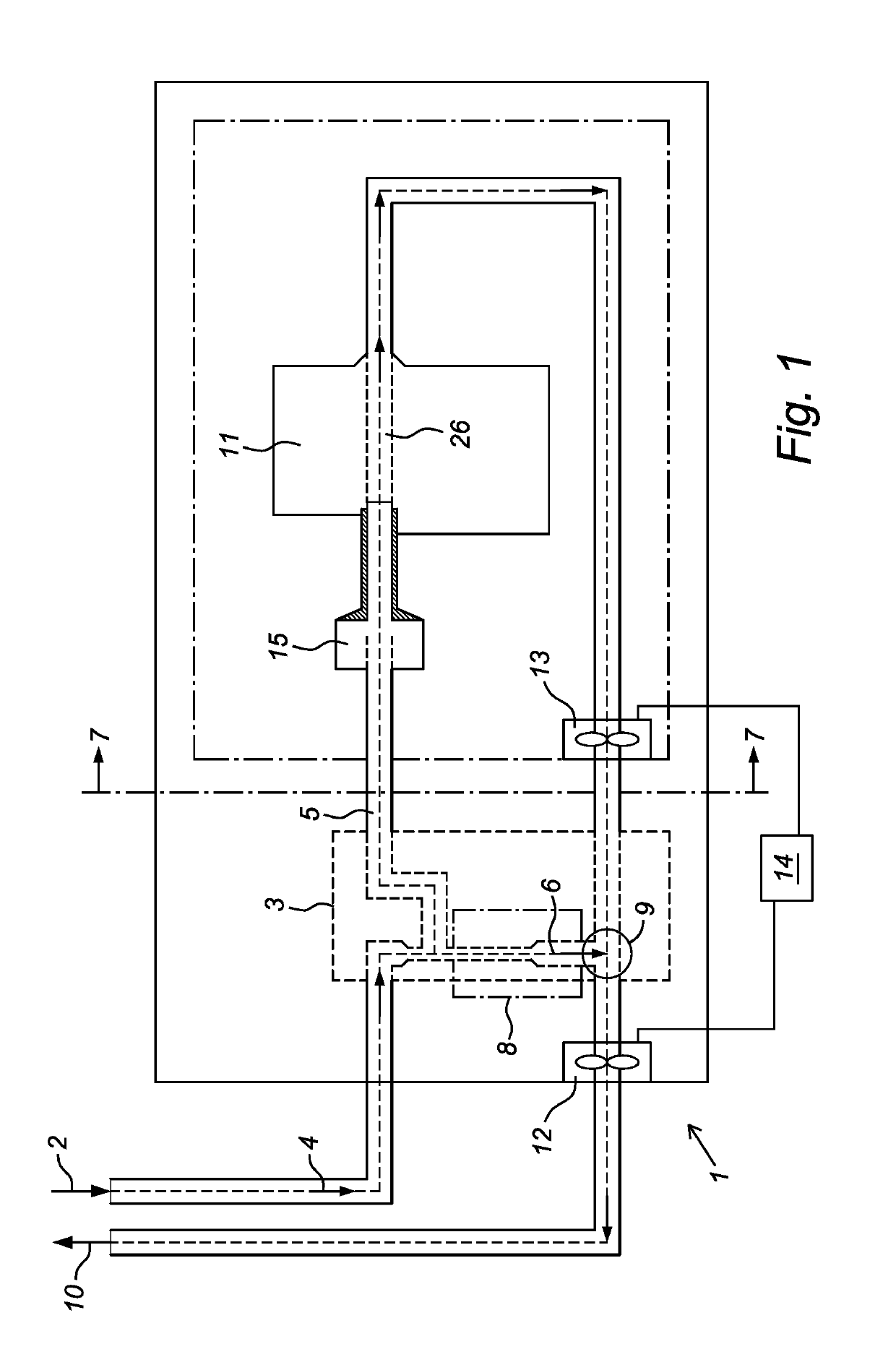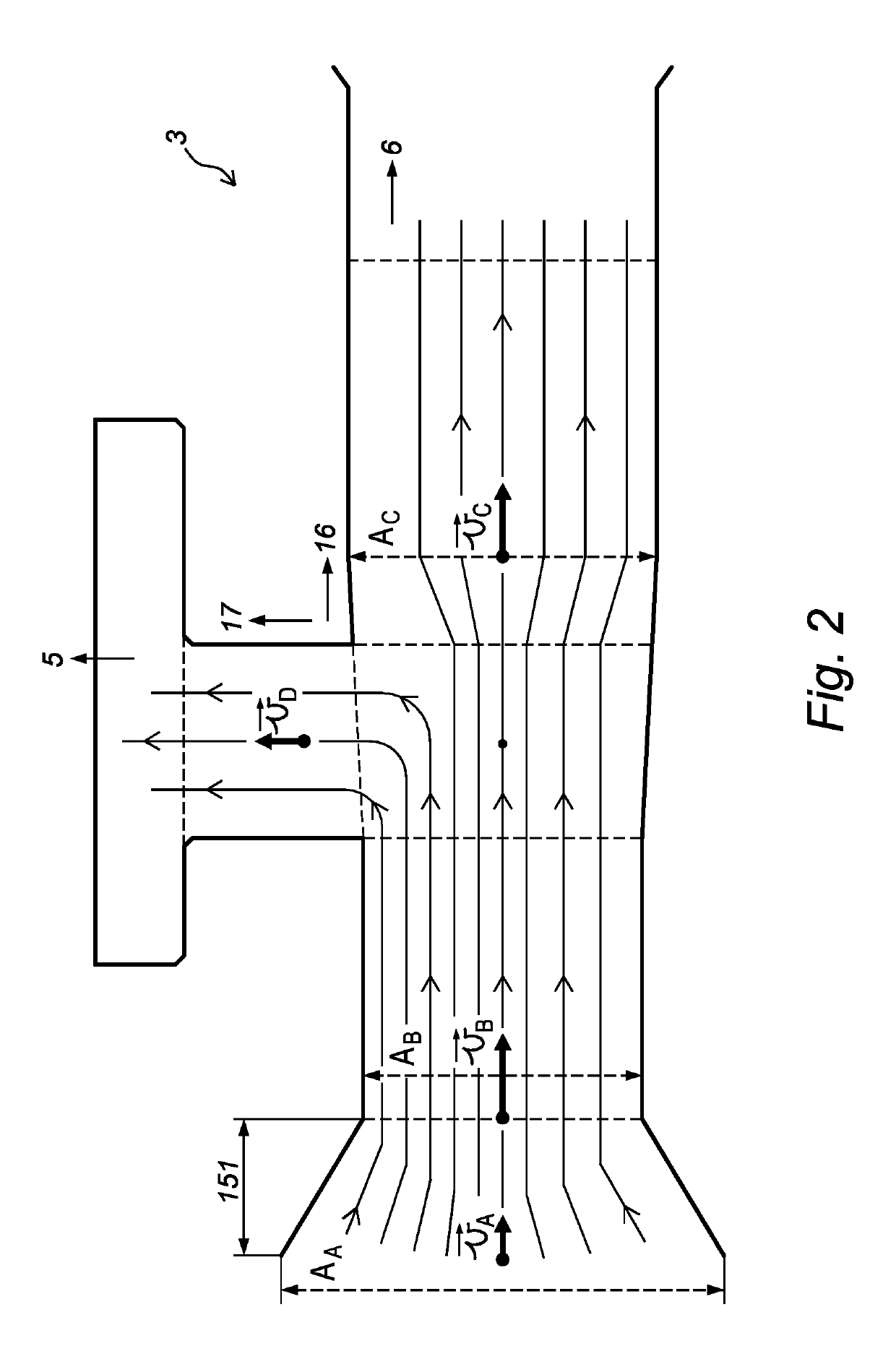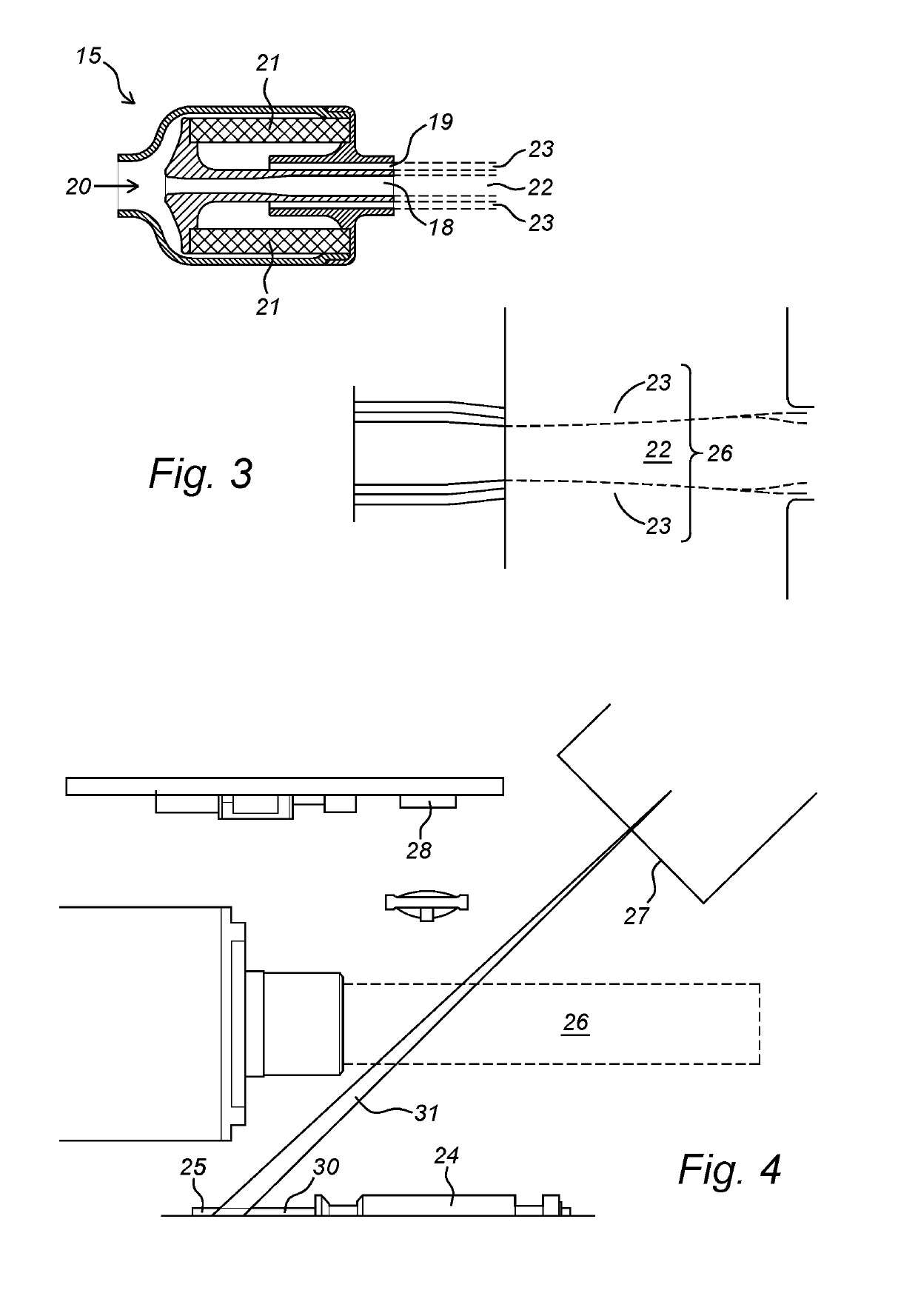Sensor system for sensing the mass concentration of particles in air
a sensor system and air mass technology, applied in the direction of suspensions and porous materials analysis, instruments, material analysis, etc., can solve the problems of sensor system complexity, inconvenient use, and inability to meet the needs of use, and achieve the effect of preventing contamination of sensor components
- Summary
- Abstract
- Description
- Claims
- Application Information
AI Technical Summary
Benefits of technology
Problems solved by technology
Method used
Image
Examples
Embodiment Construction
[0034]FIG. 1 shows a schematic overview of a system 1 according to the present invention. The system 1 comprises an inlet 2 for receiving a total flow 4 of air with particles, which inlet 2 is connected to a first splitter 3 for separating the total flow of air into a major flow 5 and a minor flow 6, wherein the major flow 5 comprising particles smaller than the predetermined threshold and the minor flow 6 comprising particles larger than the predetermined threshold and for leading the major flow to a first duct 7 and for leading the minor flow 6 to a second duct 8. Both ducts 7, 8 come together at a joint 9, which is coupled to an outlet 10. The system 1 also comprises a sensor 11, arranged in the first duct 7 for measuring the amount of particles smaller than the predetermined threshold comprised in the major flow 5 and a first flow fan 12 for drawing the total flow 4 through the system 1. The system 1 further comprises a second flow fan 13 for drawing the major flow through the f...
PUM
| Property | Measurement | Unit |
|---|---|---|
| aerodynamic diameter | aaaaa | aaaaa |
| aerodynamic diameter | aaaaa | aaaaa |
| pressure | aaaaa | aaaaa |
Abstract
Description
Claims
Application Information
 Login to View More
Login to View More - R&D
- Intellectual Property
- Life Sciences
- Materials
- Tech Scout
- Unparalleled Data Quality
- Higher Quality Content
- 60% Fewer Hallucinations
Browse by: Latest US Patents, China's latest patents, Technical Efficacy Thesaurus, Application Domain, Technology Topic, Popular Technical Reports.
© 2025 PatSnap. All rights reserved.Legal|Privacy policy|Modern Slavery Act Transparency Statement|Sitemap|About US| Contact US: help@patsnap.com



